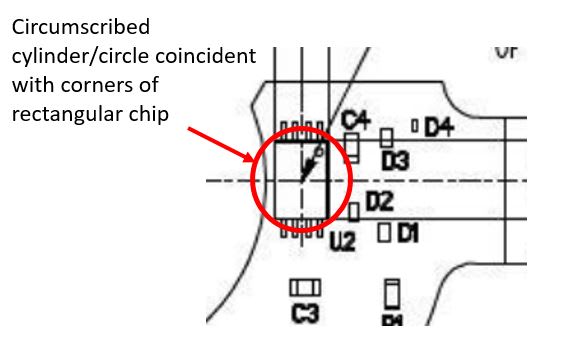Please advise if it is correct on the FRTZF tolerance of position calculating, without any reference datums on the lower segment.
Thanks
Season
Thanks
Season
Follow along with the video below to see how to install our site as a web app on your home screen.
Note: This feature may not be available in some browsers.

![[bigears] [bigears] [bigears]](/data/assets/smilies/bigears.gif) )
)3DDave 9 Dec 18 15:51 said:if the whole pattern of sensors shifts as a block it will increase the difference in pickup location as the entire group drifts off axis, so I fail to see the benefit to a composite tolerance.
greenimi 11 Dec 18 17:25 said:How to get a repeatable and reproducible axis/ centerplane from a circle / cylinnder thru 4 points? That's my question.
chez311 said:I was under the assumption that the attempt was to create a scheme where the outer profile of each chip could rotate freely with respect to its nominal center
pmarc said:.......is that by controlling position of the "centers" of the chips (even if we assume that the drawing clearly defines what the "center" really means) the chips are allowed to rotate freely about their individual "centers". My feeling is that this is not acceptable from the design standpoint.
chez311 said:but I think that in this case a Multiple Single Segment with [A|B] in the lower frame would be more appropriate to allow rotation of the pattern but not let it shift off axis as composite tolerance would do.
3DDave 9 Dec 18 19:52 said:pmarc - the chips frequently have the sensing element in the nominal center and the orientation may not be critical. It is likely that they would be controlled by default with a general angle tolerance as applied to angles defined per 1.4(i). If they were given separate angular and radial position tolerances, as I suggested was the most likely necessary control for the function, then orientation would be a fallout.
I'm here and always enjoying the different comments from different view points. Thanks all you guys.mkcski said:All: Is the OP (SeasonLee) still following this thread?
I know the same base question has been asked before - "How can multiple dimensions/features be controlled to be the same in a narrow range of each other within a much larger range overall?"
